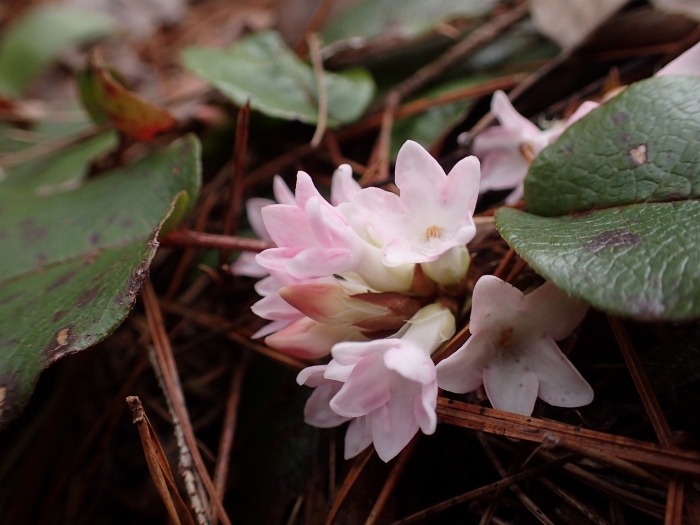Trailing Arbutus
(Epigaea repens)
Trailing Arbutus (Epigaea repens)
/
/

Evan M. Raskin
CC BY 4.0















































Estimated Native Range
Summary
The plant is valued for its early spring flowers, which are among the first to appear in the garden, and its evergreen foliage, which provides year-round interest. Trailing Arbutus is often used as a ground cover in shaded garden areas, naturalized woodland settings, and rock gardens. It thrives in acidic, humus-rich soils with good moisture retention but also requires well-drained conditions to prevent root rot. While it prefers partial to full shade, it can tolerate some sun if the soil remains consistently moist. Due to its slow growth rate and difficulty in transplanting, it is not commonly found in nurseries, but it can be propagated from cuttings or division. One potential problem is susceptibility to leaf spot diseases, which can mar the foliage if conditions are too wet.CC BY-SA 4.0
Plant Description
- Plant Type: Subshrub, Shrub
- Height: 0.1-0.3 feet
- Width: 0.333-1 feet
- Growth Rate: Slow
- Flower Color: Pink, White
- Flowering Season: Spring
- Leaf Retention: Evergreen
Growth Requirements
- Sun: Part Shade
- Water: Medium
- Drainage: Slow, Medium
Common Uses
Bee Garden, Butterfly Garden, Edible*Disclaimer: Easyscape's listed plant edibility is for informational use. Always verify the safety and proper identification of any plant before consumption., Fragrant
Natural Habitat
Understory of deciduous and mixed forests in Eastern North America
Other Names
Common Names: Ground Laurel, Mayflower, Plymouth Mayflower, Trailing-Arbutus, Gravelroot, Gravel Plant, Creeping Mayflower, Ground-Laurel, Fleur De Mai, Épigée Fleur-De-Mai
Scientific Names: , Epigaea repens, Epigaea repens var. glabrifolia, Epigaea repens f. plena, Epigaea repens var. repens, Epigaea repens f. repens, Epigaea repens f. rosea, Epigaea repens f. rubicunda, Epigaea repens var. rubicunda, Epigaea rubicunda,
GBIF Accepted Name: Epigaea repens L.